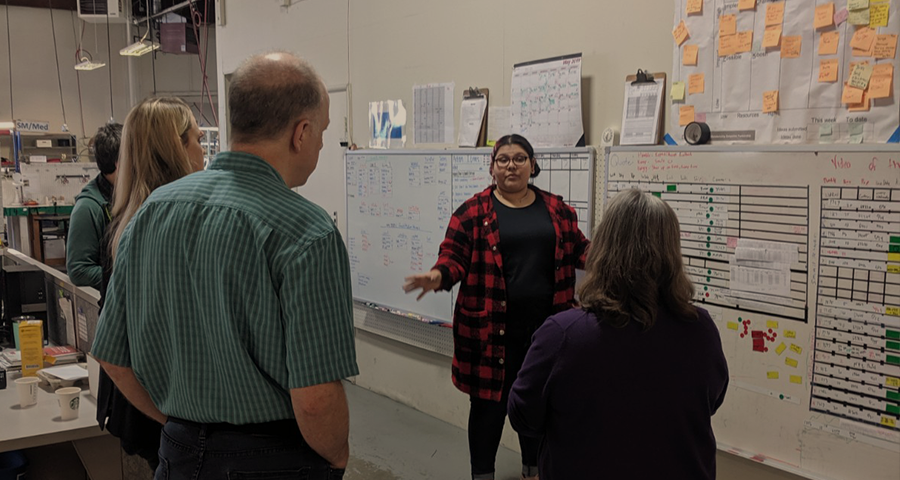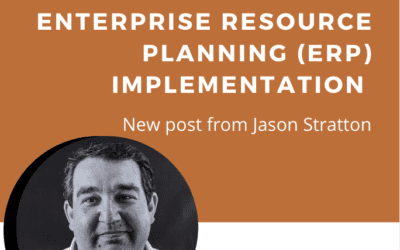As a small or mid-sized manufacturer, there are many factors that can affect your company’s profitability, both inside and outside of your control.
How do you make decisions for your manufacturing company when you don’t know what will change, or which parts of your company need to be adjusted to meet current demands?
Total Systems Thinking Brings You A Holistic View of Your Business
We’re big advocates of Total System Thinking. This method of analyzing a business enables a holistic view of what’s working across systems in your company. Like a puzzle, your strategy, suppliers, systems, customers, and material transformation are all pieces that must interlock successfully for growth and profitably.
When you explore each piece of your business’ puzzle, you can build a plan for proactive change.
Sometimes it’s helpful to visualize these systems with a tool called a Spider Diagram. This tool allows leaders to measure each piece of the company, and build a plan for success. The diagram looks like this:
Beginning in the middle of the diagram, each area is scored. The middle begins with 1, and the corresponding rings moving outward are each awarded a higher point, 2-6. The higher the score, the more work is required to meet an ideal state in this system area.
The evaluation questions are valuable for any manufacturing company looking to build a more proactive business.
How much revenue do your top 10% of clients contribute to sales?
Once you know this, you will have a clearer idea of where to focus your sales – what types of customers are best for your business, and how much energy you should put into diversifying your customer base.
Do you know your customer’s growth expectations?
Keep a clear eye on this and make a plan to meet their needs before it becomes an issue. Keep the lines of communication open so that you can prepare for increases or changes in orders as your customers grow and adapt to their markets.
Can you easily articulate your company’s strategy?
If you can’t, it’s time for a refresh. Your strategy should be clear, measurable, and actionable. Keep language simple and to the point so that your whole organization can truly absorb and understand your strategy.
Do you have a well-defined business model?
If you have been reacting to customer demands, try to update your model to reflect diverse revenue streams and build more realistic and flexible strategies.
Do you know your company’s core competency?
Are your client’s experiences of your business in alignment with that competency? If not, you may want to re-evaluate your value proposition.
Does your organization generally process information in a timely manner?
If your company takes an unnecessarily long time to process information, you will be stuck in a loop that costs you energy and time. If you can streamline information sharing processes your employees and your company will be happier. Try creating a standing meeting or standardized reporting process to start.
Do you know the true cost of your products?
Products cost you in time and energy as well as raw materials and re-work. Get a handle on each of these areas to understand your business more thoroughly and make adjustments as needed.
What percent of the time does your supplier deliver as promised? What is the quality rate (% good) from your suppliers?
If your supplier can’t meet your delivery requirements, it’s time for a frank conversation and perhaps a re-alignment. Read more about optimizing your supply chain.
Do you have enough capacity to meet demand?
If you are in “monopoly” position, you may be able to raise your selling price. However, in a competitive market, you will need to invest. Sell only what you can truly provide in a timely manner. Overselling your capacity can damage your market viability.
Is lead-time less than the fluctuation in demand?
Long lead times force you to run your business in a “reactive” mode. Seek to be nimble!
Is your planning and scheduling system capable of meeting customer demand to utilize your resources most effectively?
Timely, complete, and accurate information processing is the key to doing things right the first time.
The key to success in manufacturing and in life is balance.
If you can find a way to truly see your customer demands, balance those with your own capacity to produce, free up blockages in your processing systems, and create the flexibility required to meet demands, you’re well on your way to profitability and a stable business designed to stand the test of time.





